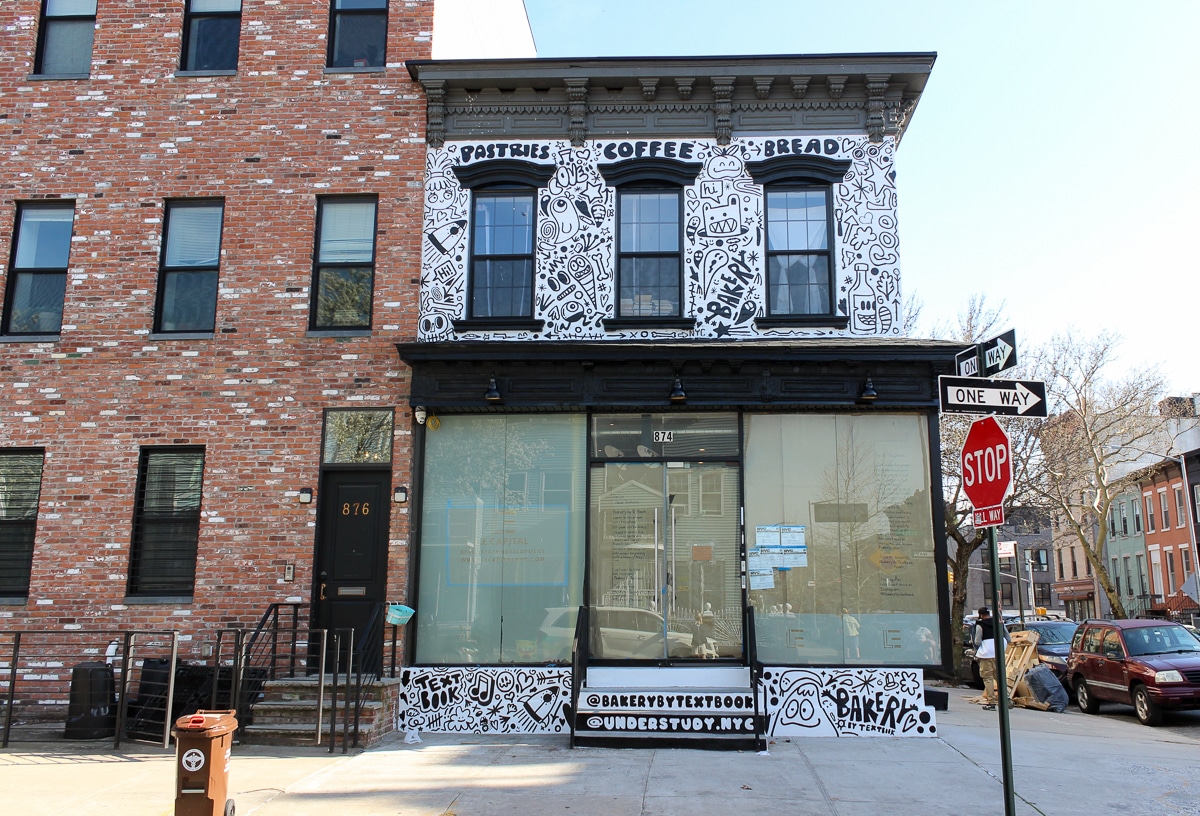Walkabout: The Yachtsman Architect
Frederick B. Langston was one of Brooklyn’s better architects during the last quarter of the 19th century. Just yesterday a group of his Park Slope houses were featured as Buildings of the Day, which got me thinking about him. My friend and colleague Morgan Munsey and I have done a lot of research on the…

Frederick B. Langston was one of Brooklyn’s better architects during the last quarter of the 19th century. Just yesterday a group of his Park Slope houses were featured as Buildings of the Day, which got me thinking about him. My friend and colleague Morgan Munsey and I have done a lot of research on the architects of Central Brooklyn, and Mr. Langston was one of the heavy hitters in the neighborhoods of Bedford Stuyvesant and Crown Heights North, as well as Park Slope. But when we tried to find out anything about him, we found very little information. We knew he lived in Brooklyn most of his life, that he came from money and that he had a yacht, but not much more. I love a good mystery and I’ve dug deeper, and have come up with today’s story, a tale about the yachtsman architect.
Frederick Bowman Langston was born in Jersey City, NJ, in 1859, the son of Captain Frederick B. Langston and Isabella Bowman Langston. He had two siblings, an older brother William and a younger sister, Isabelle. Captain Langston was a seaman, a very successful owner and captain of a merchant ship named the Parana, which sailed all around the world bringing its cargo to American and foreign ports. During the 1870s, he mostly sailed between North and South America. Mrs. Langston was from old colonial stock; her great-grandfather was Major Joseph Bowman of the Continental Army. The family was comfortably, but not extravagantly, wealthy, and young Frederick grew up around boats and the sea which would factor greatly in his life.
The family lived on Bedford Avenue, in the Bedford section, when he was a young man. We don’t know where he received his primary education, but he would go on to Lehigh University, in Bethlehem, PA, where he received his degree in architecture, a member of the class of 1884. His brother, William, five years older, also went to Lehigh. He was an engineer, and was working for Dean & Westbrook, bridge engineers and contractors in Manhattan when Frederick graduated from college.
One of Langston’s first jobs was as a draftsman for prominent Brooklyn architect Amzi Hill. After a year or so with Hill, who obviously taught him well, Frederick went out on his own. He immediately began to get commissions in the growing neighborhoods of Bedford, Stuyvesant Heights and Park Slope. His name starts appearing in the Real Estate Record and Builder’s Guide towards the end of 1888, and shows up quite often in 1889, making yesterday’s Park Slope houses among the first of his career.
His buildings were in the popular Romanesque Revival and Queen Anne styles. This was perfect for an architect who loved to mix things up, giving his clients great diversity in facades, materials and ornament. Langston’s houses were not subtle, they were often quite large and their interiors were quite opulent. His five story houses on Hancock Street, between Nostrand and Marcy Avenue were built in this period before 1890, and are his largest row houses.
In 1891, he partnered with Swedish-born architect Magnus Dahlander. It would be fascinating to find out how these men met, but theirs was a meeting of similar minds, and their partnership of only one year produced some of the finest Queen Anne row houses in New York City, as well as flats buildings and commercial buildings. Their styles meshed so well that when you see their individual work, it’s hard to tell that it’s not the pair of them together. They were able to be so creative because the Queen Anne style was so free, the rules had been put aside, and whatever struck your fancy and worked was fine with the developers who hired them. They were looking for sales, and Langston & Dahlander’s buildings were gorgeous.
They were masters of the arch. Their arches could span the width of a house from end to end, or just encompass a door or window. They designed fanciful peaked roof lines; they mixed materials with abandon, and adorned them with all kinds of ornament, from carved stone and terra-cotta with smiling and nosy little cherubs, to snarling dragons or classical busts. They used stained glass, cast iron and pressed metal for cornices, windows and fencing. Their interiors were sumptuous, with the same care and quality as the exteriors. They were amazingly prolific in the space of only one year, leaving behind a prodigious body of work.
In 1892, the partnership was over. Magnus Dahlander would continue to design prolifically, both on his own, and with his fellow Swede, Axel Hedman. In 1898, he went home to Sweden and went on to become one of the most celebrated architects of the day there. But what was Frederick Langston up to? After 1893, and a group of houses on Park Place in the St. Marks District, he seems to have taken a rest. Far from it.
There were many sides to Frederick Langston. Architecture was only one of them. Sailing was another, and so was soldiering. Langston was an active member of the elite 23rd Regiment of the National Guard, which was then located at the Clermont Armory, in Fort Greene. He had enlisted in 1888, before his architectural career really took off, and served until his discharge in 1904. By that time, the 23rd was ensconced in its fine new armory on the corner of Bedford and Atlantic Avenues, walking distance from his house.
Then, as now, service in the National Guard was a part-time job, so he was able to be an architect and a soldier. As a Guardsman, he took part in their training exercises, parades, drills and social events. The 23rd was Brooklyn’s rich boy’s regiment, many of its members were from wealthy families, and the regiment enjoyed a healthy rivalry with Manhattan’s equally elite 7th Regiment.
All of this activity kept Langston quite close to home. His was a very close family, and he never left it. He, his older brother William, and his younger sister Isabelle never married, and all of them lived at home with their parents. By 1900, the family was living at 295 Gates Avenue, between Classon and Franklin, in a home that is still there, although now radically changed. It was down the block from the Gibb mansion, the wealthiest man in the neighborhood. 1900 was a big year for the Langston boys. That year they made a fortune, and almost died.
They may have been architects and engineers, and part-time soldiers, but their father had instilled a love of the sea in the Langston boys, and they were sailors themselves. When he wasn’t soldiering or designing, Frederick was sailing. He and his brother were avid yachtsmen, and sailed regularly. The brothers saw a need for a new mooring device that would hold ships fast to port during storms and high seas, and by 1900 had perfected and marketed the “Langston Mooring.”
This was a simple small device, a saucer-like disc made of iron, with forged lugs to hold the rings and shackles that hold the chain. Between the lugs was a hole about an inch and a half in diameter. When the mooring was sunk into the sea bottom, the water pressure through the hole was so great it could not budge, anchoring the vessel. The device could replace heavy anchors. The United States Navy tested the device, and saw it hold fast a tugboat that was trying to dislodge with the full strength of its motors. They also saw it protect several vessels during a gale; an amazing device that could be made in any size, depending on the vessel it was mooring. The Langston Mooring made the Langston brothers rich. Architecture, quite understandably, was going to take a back seat on a fast boat.
Later that year, Frederick bought a new yacht; the Bessie, a steam powered boat. He and William already had a 45 foot sloop called the Aliris, which they kept in Highland, New Jersey. In October of 1900, Frederick, as captain, took the Arilis out with his brother, William and two friends. They were going to sail it north to Gravesend, to its winter berth. A storm blew up, and the Arilis became lost, with no word coming from the craft, and no sign of it. A couple of days later, a dinghy, with the name “Arilis” blew into Sandy Hook, filled with water, but with no one aboard. The men of the Arilis were feared lost at sea.
The Langston’s chartered an ocean tug to search for the yacht, or any signs of the passengers. Mrs. Langston feared her sons were dead, when no trace of any kind was found. The families of the other men also despaired. Miraculously, a boat was found floating after the storm, but hope turned to ashes when it was discovered that the men in this boat, alive and relatively well, were from another missing vessel.
Frederick was 35 years old, and William was 40. Their parents were convinced their sons were dead, but their sister, Isabelle, never gave up hope. She went down to Highland and got on board the tug looking for her brothers and kept them on the search. She was sure she would find them alive. Like her brothers, Isabelle was also an avid sailor, and knew there was a possibility that they were still alive. But the Arilis could not be found. She returned home, and the family began mourning.
Two days later, a telegram came, with news of a miracle. The yacht had been found adrift by a steamer called the Ethelred, and the four were picked up, battered, hungry, and half dead. They had been knocked around by the storm, were far off course, and the Arilis had been heavily damaged, but they made it. The Ethelred had picked them up after two days adrift, and had continued to its destination of Port Antonio, in Jamaica. The crew of the Arilis would get on another ship headed for Boston, and reunite with friends and family. The story of their loss and rescue made every paper in the New York area.
Life after that experience must have been pretty dull. Frederick continued to market their Langston Mooring Device, and was financially set for life. In 1906, the old seaman, Captain Langston died. Six years later, in 1912, his widow, Isabella Bowman Langston, died. His brother William passed away as well. For the first time in his life, Frederick no longer had his parents in the same house. It must have been traumatic, and he moved to a home at 1440 Bedford Avenue.
Although he had been honorably discharged from the National Guard in 1904, he was still a member of the Old Guard, the veteran’s club of retired Guardsmen. When World War I broke out, he reenlisted, but never was called up. On October 24, 1919, at the age of sixty, Frederick B. Langston died. The cause of death was angina pectoris – heart disease. He left behind only his sister, he had never married. His funeral was at his home, and he is buried in Green-wood Cemetery. He also left behind a body of work that continues to delight and attract attention today. A Langston or Langston & Dahlander house is a treasure to be cherished and taken care of. If you have one, you are a steward of an impressive legacy.
(Herkimer Street, Bedford Stuyvesant)

















What's Your Take? Leave a Comment